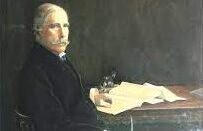Born in Bombay, India in 1847 and educated in England, John Duncan Inverarity returned to his birthplace to serve as a barrister in the Bombay High Court in 1869. Renowned for his legal acumen, he earned a stellar reputation, with the Chief Justice of the Bombay High Court noting that “for thirty years [he] had no equal in India.” Beyond his legal pursuits, Inverarity passionately engaged in big game hunting and naturalism.
In 1891, Inverarity joined the Society as a member of the Managing Committee, eventually ascending to the position of Vice President in 1897. His substantial contributions to the Society’s Journal showcased not only his prowess as a shikari (big game hunter) but also his keen observations of animal habits and characteristics. Inverarity’s writings on sport and jungle life demonstrated a flair for language and a knack for vividly describing his observations.
One notable contribution is his piece “Stray Notes on Old Indian Natural History and Sporting Periodicals” (1914), where he delves into historical periodicals such as the Oriental Sporting Magazine, Bengal Sporting Magazine, Calcutta Journal of Natural History, and Indian Sporting Review. In this work, he sheds light on new revelations about Indian wildlife, particularly through the lens of sport.
Inverarity’s observations on tigers, presented in “Unscientific Notes on the Tiger” (1888), offered valuable insights into the animal’s size, breeding patterns, hunting methods, and post-kill behavior. The publication, characterized by rich observations and amusing anecdotes, provided a unique perspective that strayed from the conventional scientific discourse.
A prolific writer, Inverarity covered diverse subjects, drawing from his field experiences and readings. His writings spanned topics such as wild dogs, man-eating panthers, waters of western India, and even “Mammalia of Somali land” (1891), based on his expeditions to Somaliland in 1889 and 1890. Notably, he documented his study on the Indian Bison or Gaur in a paper titled “The Indian Bison, with some notes on stalking him,” making a significant contribution to understanding this species.
Inverarity’s articles often featured his own photographs, some of which are displayed at the Chhatrapati Shivaji Maharaj Vastu Sangrahalaya in Mumbai. Blessed with keen observational skills and a deep love for nature, Inverarity left behind a legacy reflected in his extensive body of writings. His work continues to provide valuable insights into India’s natural history and wildlife.



